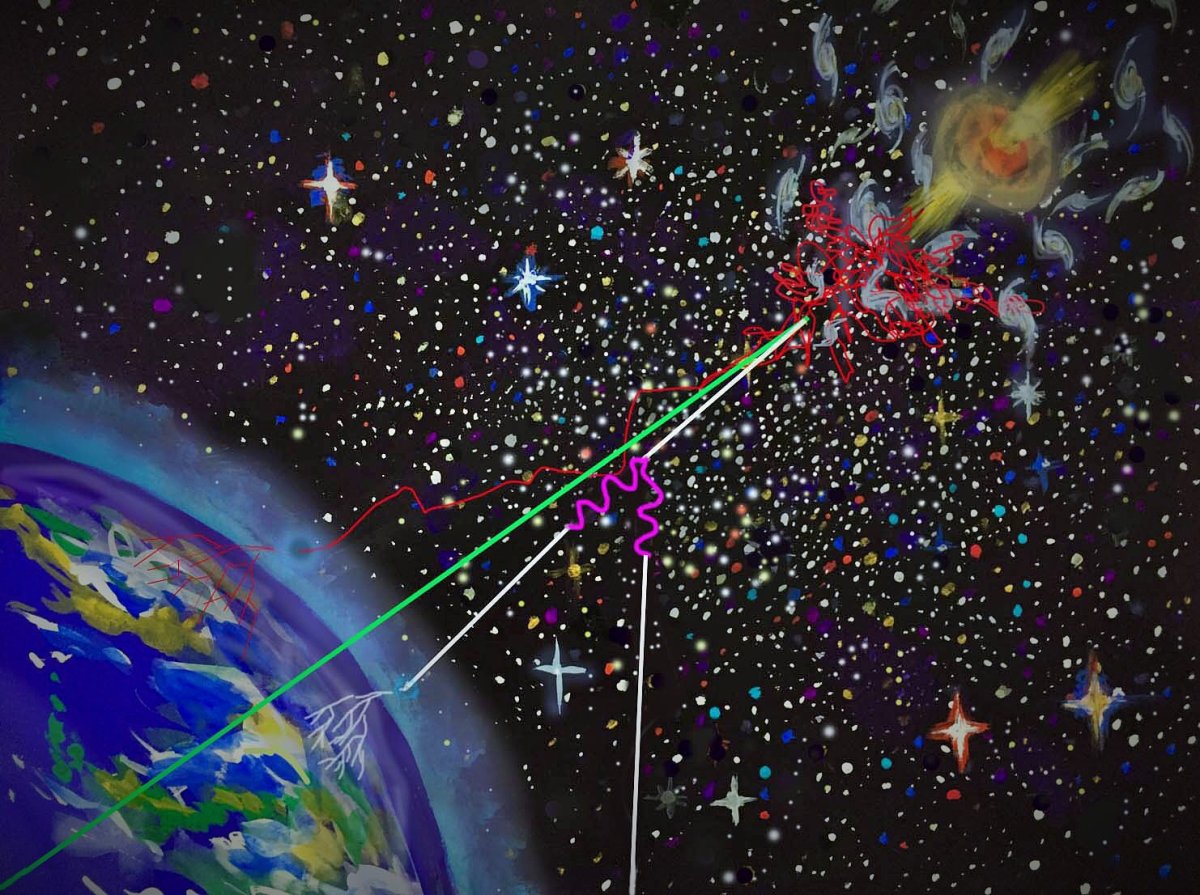
Unified Origin
One new theory could put some long-standing physics mysteries to rest. A recent astrophysical model suggests that three different types of high-energy “cosmic messenger particles” could all originate from the same phenomenon.
The theory asserts that these particles — ultrahigh-energy cosmic rays, very high-energy neutrinos, and high-energy gamma rays — were potentially all shot into space after jets from supermassive black holes accelerated cosmic rays.
Developed by scientists from Penn State and the University of Maryland, this model is the first astrophysical model of its kind. A paper describing it and its computational basis was recently published in the journal Nature Physics.
Kohta Murase, an assistant professor of physics and astronomy and astrophysics at Penn State, stated in a press release: “Our model shows a way to understand why these three types of cosmic messenger particles have a surprisingly similar amount of power input into the universe, despite the fact that they are observed by space-based and ground-based detectors over ten orders of magnitude in individual particle energy.”

Murase went on to explained that neutrinos and gamma rays, as suggested by the model, are produced naturally by particle collisions as offspring particles of cosmic rays. This means that they “inherit” the energy of their parent particles, explaining why the three cosmic messengers have similar energies.
Cosmic Messenger Particles
Each of these three extreme-energy particles has a host of unique qualities, but all share ultra-high energy levels. Neutrinos are inherently elusive and highly difficult to find, though high-energy neutrinos can and have been detected in the IceCube neutrino observatory in Antarctica. High-energy gamma rays have the highest-known electromagnetic energy. Ultrahigh-energy cosmic rays are mostly atomic nuclei, but sometimes other particles, that travel at a speed close to the speed of light.
The method used by this research team found that this “multi-messenger approach” of the three cosmic messenger particles can be explained by numerical simulations.

“Our work demonstrates that the ultrahigh-energy cosmic rays escaping from active galactic nuclei and their environments, such as galaxy clusters and groups, can explain the ultrahigh-energy cosmic-ray spectrum and composition,” said Ke Fang, a postdoctoral associate at the University of Maryland, in the press release. “Simultaneously, the very high-energy neutrino spectrum above one hundred million mega-electronvolts can be explained by particle collisions between cosmic rays and the gas in galaxy clusters and groups.”
The revelation provided through this model’s simulations serves to resolve previous discrepancies in physics and our understanding of the universe. It is a step towards creating a unifying model of how these three extreme-energy particles are physically connected. This method also pushes forward multi-messenger astronomy, which uses both theory and data from all three particles.
“The golden era of multi-messenger particle astrophysics started very recently,” explained Murase in the press release. “Now, all information we can learn from all different types of cosmic messengers is important for revealing new knowledge about the physics of extreme-energy cosmic particles, and a deeper understanding about our universe.”